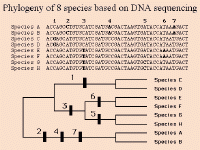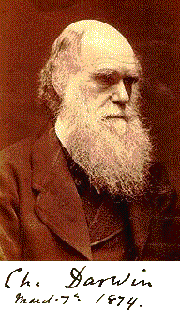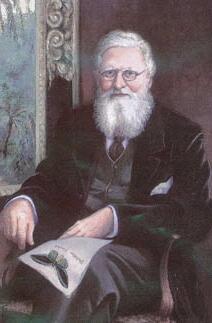| Taxonomy -- Trees of Life
|
|
Natural Perspective : A beautiful and informative website. Provides a 38-page introduction to aspects of taxonomy with brief overviews and many photographs of species.
Nearctica - Systematics - Checklists :
Student and Educator Resources (extremely well done)
The Tree of Life : Searching for a Taxon? This nicely organized site has most of the names in English to make browsing easy.
The Tree of Life : This is the full website. Be sure to check the Treehouses feature (under development) and the page for beetles.
Encyclopedia of Life : This database holds information on over 50,000 species, from humpback whale to eastern hemlock, including endangered status, distribution, life history, and references.
Biodiversity and Biological Collections : is of interest to systematists and organismic biologists. Find information about specimens in biological collections, taxonomic authority files, reports by various standards bodies, and much more.
Identifying Species of Things : Nature field guides (Audubon series) online. Lots of information for neophytes as well as for those who just want to learn more.
|
|
Phylogenetic Trees
|
|
Phylogenetic Trees : Plenty of genealogy Web sites allow you to trace your family history. This collection provides a similar service for biologists who want to know how organisms are related. There are more than 1750 published phylogenetic trees -- mainly for plants, vertebrates, and fungi -- along with original data.
Phylogeny of Turtles : In addition to the nicely illustrated cladogram, a slide show based upon a 1996 article in Natural History magazine, and other documentation about turtles, makes this site attractive and informative.
Darwin's Finches: A Phylogenetic Analysis Evolution: Vol. 56, No. 6, pp. 1240–1252. Darwin's finches are part of a well-supported monophyletic group of species, all of which build a domed nest. All but two of the non-Darwin's finches included in this clade occur on Caribbean islands and most are Caribbean endemics.
|
|
Fossil Taxa
|
|
UC Museum of Paleontology : For fossils of most genera, look up the phylum you're interested in, then click on the fossil record option for that taxon. This site is really stunning!
North American Fossil Mammal Database
Phylogenies, taxonomic histories, age-ranges, and body mass estimates for genera and species of Cretaceous and Cenozoic North American fossil mammals.
Out on a Limb : The science of body development may make kindling out of evolutionary trees. Arguing the relationships of pre-human fossils.
Evolution of Limbs : The Hox gene family is present in animals across phyla and has the potential to explain major changes of the bauplan (body plan - the overall layout of the body).
|
|
|
Cladistics
|
UCMP Glossary for Cladistics

A Variety of Family Trees
with larger version of cladogram shown above.
Journey into the World of Cladistics :
Introduction, Methods, implications and the need for cladistics pages from Univ. of Calif. Museum of Paleontology.
Understanding Cladistics : Organisms grouped according to shared features. From Amer. Mus. of Natural History.
PhyloCode - a much overhyped attempt to replace traditional Linnaean Taxonomy with something new reflecting a more cladistic viewpoint, this proposed system has won little support outside of its core group of adherents, which, fortunately, hasn't grown much.
What is Cladistics? :
From the
Journal of Avocational Paleontology
Abstracts from Journal Cladistics
|
|
Taxonomy—What Is It?
|
|
Classification of Living Things : An intro to the principles of taxonomy.
Taxonomic Hierarchy : Commonly used categories of animals.
Vernacular & Common Names.
Species Search Engine : This toolkit can help you untwist the tangled taxonomy of 874,000 species of animals, plants, and microbes. It searches through 12 taxonomic databases.
|
|
Codes of Nomenclature
|
|
Rules governing the naming of species, exist for several different kinds of organisms and plants. Due to their lengthy nature, most of them are not available, in toto, online. The Code of Botanical Nomenclature may be seen online within a series of lectures on Systematics and Taxonomy.
Print copies of the several taxonomic codes have bibliographic data given at Codes of Nomenclature. These include Zoology, Cultivated Plants, Bacteria and Viruses. For plants there is an electronic version of the Int'l Code of Botanical Nomenclature (Tokyo Code).
A draft BioCode and documents related to it are discussed at BioCode. A more inclusive PhyloCode is expected to become operational within a few years. A draft of the proposed code may be found at PhyloCode. This code will be based on clades and will differ from Linnaean systems that use categorical rank such as genus and family.
Bacterial Names used in nomenclature.
|
|


